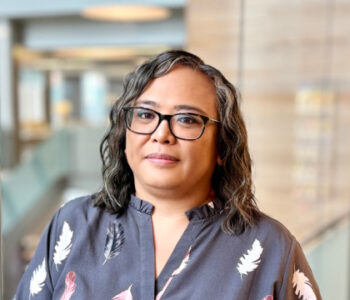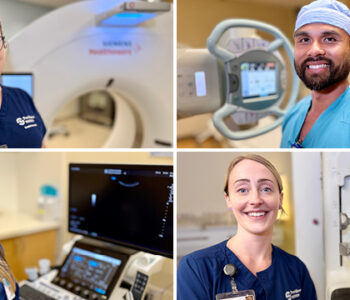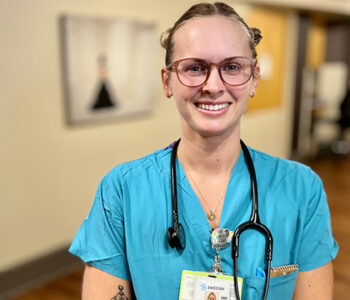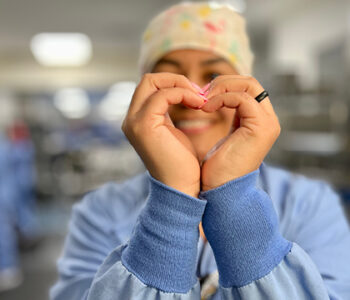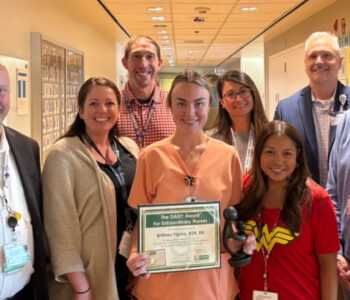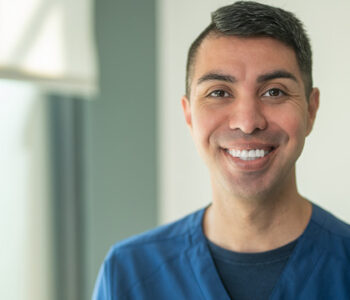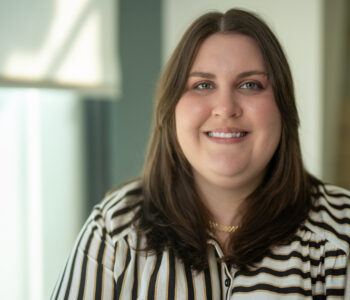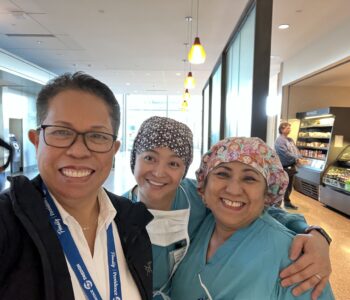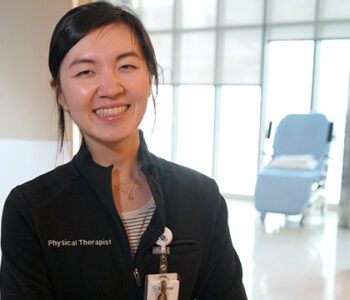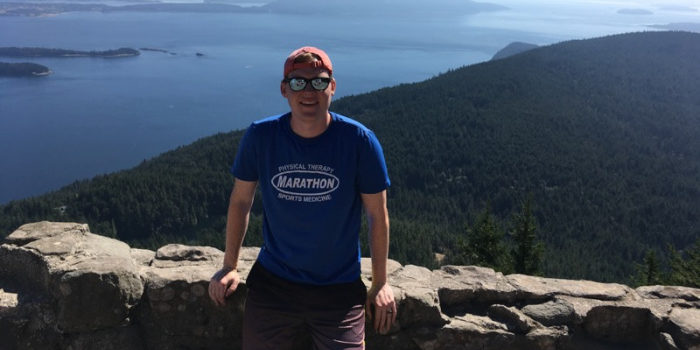 Caregiver Stories
Caregiver Stories
Caregiver spotlight: Sean, RN, Cardiac Cath Lab, Swedish Cherry Hill
Considering joining us as a Critical Care Nurse? Here’s one nurse’s journey to Swedish – and what he has to say about the job, the culture and the intangible benefits of the work he does.
Drawn in by the Swedish RN Residency Program
After growing up in rural Western New York, Sean went to college in Pennsylvania and nursing school in Boston. He started out pursuing his M.D. but switched to nursing instead. “My father and my father-in-law are both doctors,” says Sean. “I thought that was my path, but I decided against that. I ended up at Swedish because I found the residency program in the ICU. That allowed me to very quickly jump into intensive care without having to slowly climb the corporate ladder. I wanted to dive right into the ICU.”
Sean says the Swedish Residency program is unique for a couple of reasons. “Other places have residency programs, but they don’t offer as much benefit or guarantee a position at the end.”
After gaining experience in the ICU, Sean transitioned to the Cardiac Cath Lab.
Life of a Cardiac Cath Lab Nurse
Sean’s part of a team of nurses and staff that treats patients with heart attacks and valve disease, as well as provides preventative care to patients who are on the way to having a heart attack. Says Sean, I tell my patients, “My whole purpose here is to make you comfortable and keep you safe.”
He says that runs the gamut from giving people pain medicine to sitting with them while they’re doing the hard work of healing to administering CPR. “It’s critical care nursing. Even though it’s in a procedural area and not in an ICU, it requires a critical care approach.”
A great place to work
One of the reasons Sean says he enjoys coming to work is the team dynamic. “I love the people. There is a level of comradery that you can’t come across unless you work with someone at 2:00 AM and you’re opening someone’s chest up. It’s this kind of, almost war time, soldier-like level of trust and intuition and bonding that you get with people. I have never been in any other situation or any other profession that has given me what the people at Swedish have given me, in particular the nurses, techs and docs. It’s the people that are standing right next to me that have kept me at Swedish.”
According to Sean, people might also be surprised to know that even though Swedish is part of a large healthcare organization, Providence, it’s a community hospital at heart. “It feels more like the hospital that I went to when I was growing up. So, patients get the highest level of care on the West Coast for heart attack and vascular disease, with a personal touch.”
Flexible schedules for working parents
Sean appreciates that his manager worked with him after he came back from paternity leave to create a schedule that works well for his family. “I have a 10-month-old son who’s an absolutely lovely, beautiful little tank of a human being. I needed to set my schedule to align with my wife’s schedule. Just being able to know I can count on set days and hours that work for us—that’s a powerful thing to be able to have.”
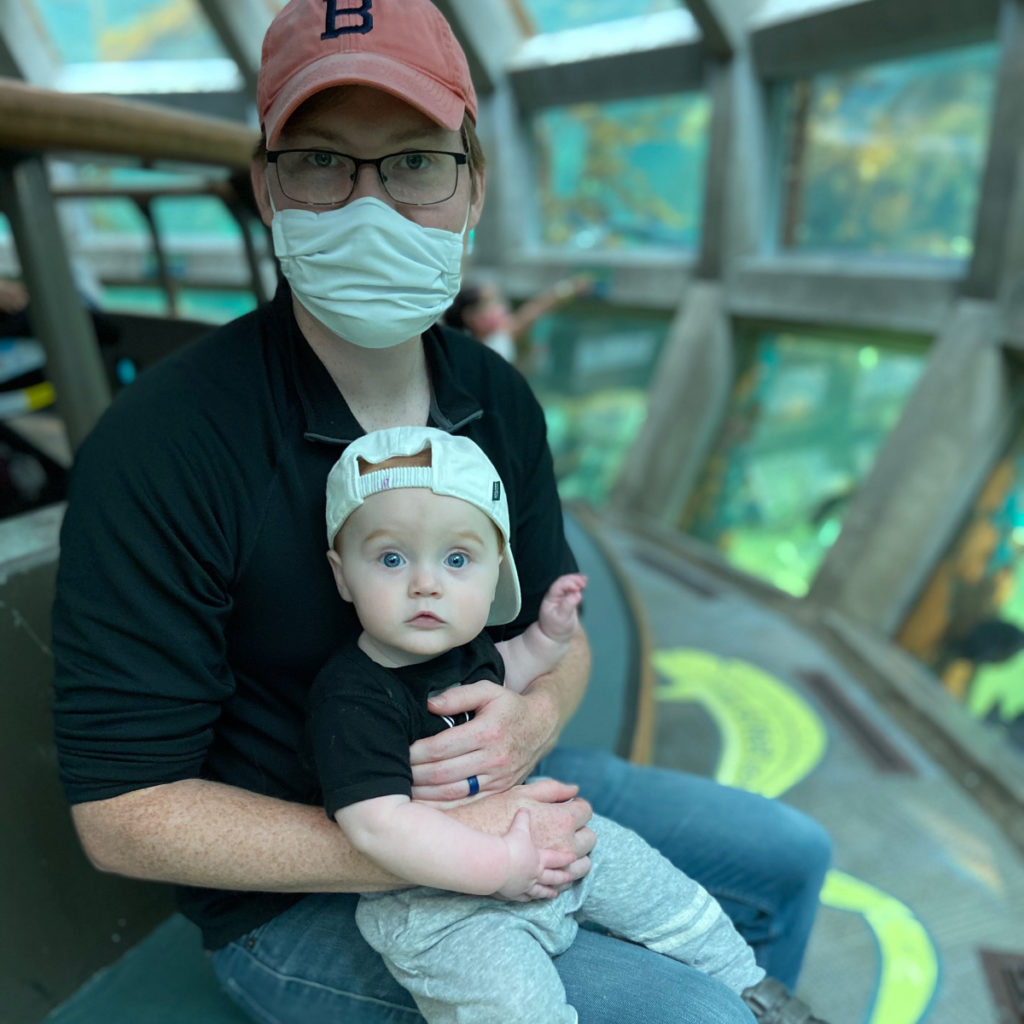
Trust to do your job
Another intangible benefit Sean cites about working at Swedish is the trust he’s been able to build up during his time here. “Being trusted to make split-second critical decisions is really important. Swedish has given me that confidence. You can’t put a price tag on that.”
“In the Cath Lab, every day is different. That’s one reason I really like it—when I’m walking in, I have no idea what my schedule is going to be. The time spent and emotional labor is vastly different day to day. It’s what keeps it so interesting and new and dynamic.”
According to Sean, even though every day is different, they all begin the same way. “I start by looking at the board and plot out how much time am I going to need—and predict how much stress the day might have. After our first meeting of the day, I check the lifesaving equipment, monitoring equipment, O2, defibrillator, IV pumps and all of the other stuff I could need in the room I’m assigned.”
Sean says, “When a patient is brought down, I have to immediately meet them and make them trust me as their caregiver. Suddenly I become very entwined in their lives because I’m tasked with keeping them alive. The contract between the nurse and the patient is, you let me help you—you trust me to do that. It’s very special. It’s a very powerful relationship that Cardiac Cath Lab RNs have to develop five times in a row in 12 hours.”
A well-oiled machine
When it comes to wins at work, Sean talks about the orchestrated way caregivers work together in the Cardiac Cath Lab. “It’s amazing to be able to bring someone back or save someone who comes in with horrendous chest pain. They come in so scared and often just bewildered by what’s going on, because it really is a whirlwind that brings someone in from the field with the EMTs. We’re a well-oiled machine all working together: everyone knows what everyone else is doing and you stay out of others’ way and they stay out of yours.”
Sean adds, “When you know that you’ve saved someone’s life and their family comes in and thanks you, and the patient leaves feeling good, there’s no other feeling like it. It’s a very demanding, difficult job, but that’s what makes it so special. The connections. I sleep extremely well at night because I know I worked my hardest and often saved someone’s life.”
If you’re interested in advancing your career and helping us care for the most critical patients, see the latest acute care nursing opportunities.

